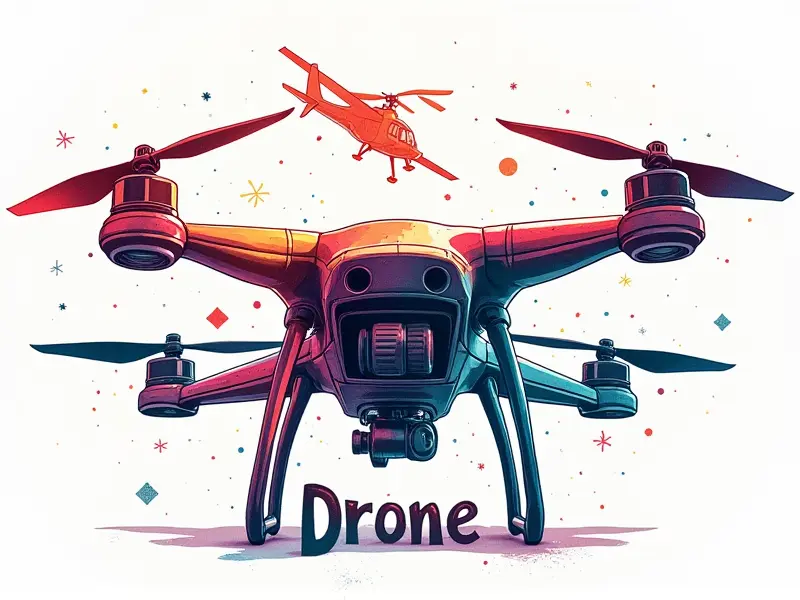What's GPS in drones?

Drones have become an indispensable tool across various industries, from agriculture and construction to photography and surveillance. One of the key technologies that enables drones to perform their functions effectively is Global Positioning System (GPS). This article delves into why GPS is essential for drones, how it enhances drone performance, and what benefits it offers to pilots.
Why GPS is Essential for Drones
The integration of GPS in drones provides numerous advantages that are crucial for their operation. Firstly, GPS ensures accurate positioning and navigation capabilities, allowing drones to maintain a stable flight path even in challenging weather conditions or over vast distances. Secondly, it enables the drone to return automatically to its starting point (known as Return-to-Home) if the signal is lost or battery levels drop critically low.
Enhancing Drone Performance with GPS
The use of GPS significantly boosts a drone's performance by facilitating precise flight control and automated missions. By integrating GPS data, drones can execute complex maneuvers such as waypoint navigation, follow-me modes, and autonomous flights without direct human intervention. This feature is particularly beneficial for commercial applications where efficiency and accuracy are paramount.
Benefits of GPS for Drone Pilots
Pilots benefit immensely from GPS-enabled drones due to increased safety and operational flexibility. With real-time location tracking, pilots can monitor the drone's position on a map interface, ensuring it remains within legal flight boundaries and avoids restricted airspace. Additionally, GPS aids in optimizing flight paths, reducing energy consumption, and minimizing the risk of collisions.
Understanding GPS Functionality in Drones
The basic principle behind GPS functionality involves receiving signals from multiple satellites to triangulate a precise location on Earth. In drones, this technology is embedded within onboard navigation systems that process satellite data to provide continuous updates about altitude, speed, and orientation. This information helps the drone maintain stability during flight and execute programmed tasks accurately.
Mastering GPS Features in Your Drone
To fully leverage the capabilities of GPS in your drone, it's essential to familiarize yourself with its various features. These include:
- Waypoint Navigation: This feature allows you to pre-program specific coordinates for the drone to follow autonomously.
- Return-to-Home (RTH): If the signal is lost or battery levels drop, the drone will automatically return to its launch point.
- Follow-Me Mode: The drone can track and follow a designated target while maintaining a set distance.
Navigating with GPS: A Drone Guide
Navigating using GPS in drones involves several steps. First, ensure your drone is properly calibrated before takeoff to establish accurate initial positioning. Once airborne, utilize the map interface on your remote control or mobile app to set waypoints and monitor real-time flight data. Always keep an eye out for potential obstacles and adjust settings as needed to maintain optimal performance.
GPS Tracking in Modern Drones
Modern drones come equipped with advanced GPS tracking systems that offer enhanced accuracy and reliability compared to older models. These systems often integrate additional sensors like accelerometers and gyroscopes to provide a more robust navigation solution. Furthermore, many contemporary drones support live video streaming and telemetry data transmission, allowing pilots to monitor their drone's status in real-time.
Maximizing Your Drone's GPS Capabilities
To maximize the benefits of GPS in your drone, consider implementing best practices such as:
- Maintaining Clean Signals: Ensure there are no obstructions or interference that could disrupt satellite signals.
- Frequent Calibration: Regularly calibrate your drone's compass and GPS module to maintain optimal performance.
- Leverage Advanced Features: Utilize features like geofencing, altitude hold, and intelligent flight modes for better control and safety.
Inside the GPS System for Drones
The GPS system in drones consists of several components working together to provide accurate positioning data. These include:
- Satellite Receivers: Capture signals from multiple satellites to determine location.
- Microcontroller Units (MCUs): Process raw GPS data and integrate it with other sensors for comprehensive navigation support.
- Data Transmission Modules: Send real-time flight information back to the ground station or mobile app interface.
Exploring GPS Capabilities in Drones
The capabilities of GPS in drones extend beyond basic positioning and navigation. Advanced features such as precision landing, obstacle avoidance, and terrain mapping are becoming increasingly common. These functionalities enable drones to operate more efficiently in diverse environments and undertake complex missions with greater reliability.
Essential Guide to Drone GPS Systems
This guide serves as a comprehensive resource for understanding and utilizing GPS systems in drones effectively. From initial setup to advanced configurations, it covers all aspects necessary to optimize your drone's performance and ensure safe operation across various applications.
Conclusion
In summary, the integration of GPS technology into drones revolutionizes their functionality and usability. By providing accurate positioning, enhanced navigation capabilities, and numerous safety features, GPS significantly elevates the operational efficiency and versatility of drones. Whether you are a hobbyist or a professional pilot, mastering the use of GPS in your drone can greatly enhance your flying experience.

